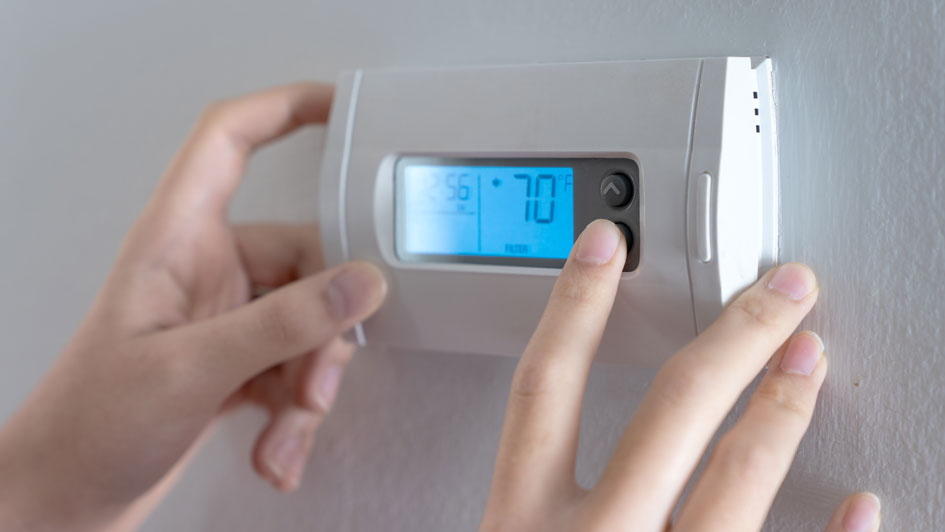
It's always nice when we manage to save money on our utility bills, but you should know there’s a way to lower energy use, even when you're not even home.
The secret is your thermostat. By making the most out of your thermostat, you can structure its daily schedule around your personal preferences. You can create a number of automated temperature settings for when you’re at home, away or even when you’re asleep.
By trying a few of these schedules, you'll be able to enjoy comfortable temperatures while also keeping more of your money. Check out our guide on how your thermostat can be a source of energy savings:
While at Home
Pretty much whenever you're home, you want to enjoy a comfortable temperature. That’s why it’s best to set your thermostat lower in the summer while inside to appreciate the cool air.
But the ideal temperature for the summer is in fact anywhere between 78 and 80 degrees Fahrenheit. By adjusting things a few degrees, you'll avoid the worst of summer while still keeping your energy bills low.
While Away
When setting the temperature for whenever you're gone, it's extremely common to move the thermostat higher than normal.
If your home is located somewhere a little cooler, you can set the thermostat to temperatures as high as 88 degrees while no one is home and then lower it back to the sweet spot of 78-80 degrees after you return. This way, your air conditioning won't have to work constantly to keep an empty house cool.
While Sleeping
When it comes to sleeping in the summer, you want a nice cool temperature. A good rule of thumb is between 68-72 degrees Fahrenheit. You won't have to worry about getting too hot or too cold while you're trying to sleep.
Other Ways to Use Less Energy:
- Put in a smart thermostat: Trying a smart thermostat in the summer helps save money on energy costs as it forms temperature schedules according to your lifestyle and personal preferences. A smart thermostat manages the temperature if you are home or sleeping, while allowing it to get warmer when the house is empty. Using reputed brands and models such as the Lennox iComfort, you have the ability to remotely access and change the temperature through your smartphone, tablet or laptop. Requesting smart thermostat installation in your Justin home is an effortless way to set the correct temperature even when you aren’t home.
- Replace current equipment with a newer HVAC system: A new HVAC system can save money in the long run. By investing in a more energy-efficient system, you can also count on lower utility bills since more efficient equipment requires less energy to heat and cool your home. Air conditioning installation in Justin is a great way to beat the heat in the summer.
- Schedule annual AC maintenance: Whether or not you keep up with regular air conditioning maintenance in Justin can have a serious effect on your total monthly energy use. With regular cleaning of the coils, checking for damage and clearing ventilation of dust and debris, you may notice your HVAC system run more efficiently. More efficient operation reduces strain on important or delicate components and lowers operational costs, lowering total energy use and eventually the total monthly bill.
- Clean or replace the air filter on a regular basis: A regular schedule for cleaning or replacing the HVAC system's air filter saves money by helping air flow efficiently through your air conditioner. When filters are old and less effective, air conditioners have to work harder, and the strain can reduce the system’s life span and cause breakdowns.
- Confirm your attic is sufficiently insulated: Insulation is a vital part of maintaining an energy-efficient home, keeping the hot air outside and the cool air inside over the summer. The North American Insulation Manufacturers Association (NAIMA) offers an official recommendation stating homeowners in souther states should install at least 13-14 inches of insulation, while colder climates do better with 16-18 inches.
- Inspect your ductwork: Leaky ductwork can raise your energy bills much more than 20 percent, plus it can potentially allow harmful emissions from your water heater, clothes dryer and other appliances to get into the atmosphere of your home. Finding any leaks fast and sealing them can fix both of those problems.
- Seal all other leaky spots in your home: Sealing leaky spots in your home with caulk, foam sealant or weather-stripping can help keep it cooler on hot summer days. You should also check for any gaps around windows, doors and even outdoor fixtures. Making time to seal leaks now can help you save a lot over time.


